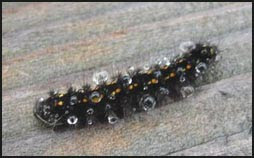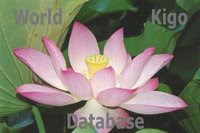:::::::::::::::::::::::::::::::::::::::::::::::::::::::::::::::::::::::::::::::::::::::::::::::::::::::::::::::::::::::::::
Grafitti / Graffiti / Graffitti / グラフィティ
***** Location: Worldwide
***** Season: Topic
***** Category: Humanity
*****************************
Explanation

quote
Graffiti (singular: graffito; the plural is used as a mass noun) is the name for images or lettering scratched, scrawled, painted or marked in any manner on property. Graffiti is any type of public markings that may appear in the forms of simple written words to elaborate wall paintings. Graffiti has existed since ancient times, with examples dating back to Ancient Greece and the Roman Empire.
In modern times, spray paint, normal paint and markers have become the most commonly used materials. In most countries, defacing property with graffiti without the property owner's consent is considered vandalism, which is punishable by law. Sometimes graffiti is employed to communicate social and political messages. To some, it is an art form worthy of display in galleries and exhibitions; to others it is merely vandalism.
Graffiti has since evolved into a pop culture existence often related to underground hip hop music and b-boying creating a lifestyle that remains hidden from the general public.
© More in the WIKIPEDIA !
:::::::::::::::::::::::::::::::::::::::::::::::::::::::::::::::::::::::::::::::::::::::::::::::::::::
Berlin Wall Art and Graffiti

source : planetware.com
In 1976 East German Border Troops begun to erect a new typ of Wall in Berlin, the so-called 'Border Wall 75'. This concrete Wall was 3.60 meter (11.81 ft) high and white painted. Although painting was not allowed, the complete Wall system was on the territory of East Berlin, many artists begun to paint on the Western side of the Wall in the beginning of the 80s.
Artists like Thierry Noir and Keith Haring discovered the Berlin Wall as the world's longest canvas which had to be painted.
Many known and unknown artists painted on the Wall in the following years and the paintings were often painted over within hours or days. The Wall art was not protected, everybody could paint on the Wall. On the Western side of the Berlin Wall the Wall was colorful whereas the Eastern side was white or grey.
After the fall of the Berlin Wall in 1989 the Eastern side of the Wall was also painted by artists.
source and much more information
http://www.dailysoft.com/berlinwall/art/index.htm
. WKD : Berlin Wall (Berliner Mauer )
:::::::::::::::::::::::::::::::::::::::::::::::::::::::::::::::::::::::::::::::::::::::::::::::::::::
Alcatraz Island
is an island located in the San Francisco Bay, 1.5 miles (2.4 km) offshore from San Francisco, California. Often referred to as The Rock, the small island early-on served as a lighthouse, a military fortification, a military prison, and a federal prison until 1963.
Due to its isolation from the outside by the cold, strong, hazardous currents of the waters of San Francisco Bay, Alcatraz was used to house Civil War prisoners as early as 1861.
During World War I the prison held conscientious objectors, including Philip Grosser, who wrote a pamphlet entitled 'Uncle Sam's Devil's Island' about his experiences.
© More in the WIKIPEDIA !

Photo Gallery about Alcatraz Graftiti
http://www.pbase.com/jamartini/convictgraffiti
*****************************
Worldwide use
Japan - グラフィティ

. . . CLICK here for Photos !

グラフィティ だるま Daruma Grafitti
*****************************
Things found on the way
Street-art in Japan

- Photo Collection
- source : www.fatcap.com
.......................................................................
- - - - - Books - - - - -
Graffiti Japan
by Remo Camerota
Japan has long been a breeding ground for innovative appropriation of Western traditions, as with cinema and baseball. But the fanatical embrace with which Japanese artists have welcomed graffiti has made for a street-art scene wholly apart from its Western origins. As the first English-language book dedicated to Japanese graffiti, Graffiti Japan is an obvious choice for a paperback edition, featuring all the same great photographs and artist interviews with KRESS, BELX2, FATE, TENGA, EMAR, SUIKO, QP, and many more.
The graffiti featured in Graffiti Japan replicates the calligraphic intricacies of the Japanese language with spray paint, depicting how anime and manga characters, national pride, as well as foreign influences, are integral parts of the country's scene. From sprawling, legally sanctioned murals to illegal throw-ups hidden in alleyways, this work could not exist in any other country.
- source : www.amazon.com
- rakugaki 落書き -
RackGaki: Japanese Graffiti
by Ryo Sanada

Badges, buttons and pins have been around for over a century. Today they're everywhere: on lapels and bags all over the world and in the sketchbooks and on the screens of some of the hottest graphic designers, artists and illustrators. A badge can be a cheap and easy way to display political or cultural affiliations or it can simply be a fashion accessory. Cheap to produce and easy to make at home, the humble badge is the new Tshirt.
A guide to the best and most beautiful badges being produced right now be they graphic, textual or plain illustrative this book explores the rich variety of uses of the badge since the year 2000 whether it be promotion, revenue-raising or simply decorative. It will appeal to graphic designers, illustrators, fashion designers, artists, music lovers and badge enthusiasts of all ages.
- source : www.amazon.co.uk
:::::::::::::::::::::::::::::::::::::::::::::::::::::::::::::::::::::::::::::::::::::::::::::::::::::

source : geno-web.jugem.jp
. 河童 / 合羽 / かっぱ / カッパ - Kappa, the Water Goblin of Japan! .
*****************************
HAIKU

first swallows -
they leave grafitti
on my roof

first swallows -
my roof turned canvas
for modern art
Gabi Greve
Birds in our Paradise, December 2005
:::::::::::::::::::::::::::::::::::::::::::::::::::::::::::::::::::::::::::::::::::::::::::::::::::::
. Matsuo Basho 松尾芭蕉 - Archives of the WKD .
落書に恋しき君が名もありて
rakugaki no koishiki kimi ga na mo arite
among these graffiti
is the name of someone
I love
Basho's Narrow Road: Spring and Autumn Passages
Hiroaki Sato
- reference source : google books -
:::::::::::::::::::::::::::::::::::::::::::::::::::::::::::::::::::::::::::::::::::::::::::::::::::::
. Yosa Buson 与謝蕪村 in Edo .
落書の壁をおはれむ今日の雪
rakugaki no kabe o oharemu kyoo no yuki
the graffitti
all over the wall -
snow of today
Tr. Gabi Greve

:::::::::::::::::::::::::::::::::::::::::::::::::::::::::::::::::::::::::::::::::::::::::::::::::::::
. Kobayashi Issa 小林一茶 in Edo .
近づきのらく書見へて秋の暮
chikazuki no rakugaki miete aki no kure
friends of mine
scrawled on this wall...
autumn dusk
Rakugaki is scribbling in public places. People have scrawled messages signed with names that Issa recognizes. Chikazuki is a word that denotes an intimate, friendly relationship; Kogo dai jiten (Shogakukan 1983) 1040.
This verse appears in a short haibun (a prose piece with haiku), describing a visit to Zenkôji, where Issa found graffiti signed, just the previous day, by people from Nagasaki whom he hadn't seen in years;
Makoto Ueda, Dew on the Grass: The Life and Poetry of Kobayashi Issa.
It is a revision of the following haiku, written the same year:
shitta na no rakugaki miete aki no kure
I know this wall scribbler's
name...
autumn dusk
- Tr. and comment : David Lanoue -
:::::::::::::::::::::::::::::::::::::::::::::::::::::::::::::::::::::::::::::::::::::::::::::::::::::
Grafitti Haiku
A splash of colour;
Sudden reprieve from the pall –
Writings on the wall.
Danielle Moffat
source : www.poemhunter.com
:::::::::::::::::::::::::::::::::::::::::::::::::::::::::::::::::::::::::::::::::::::::::::::::::::::
Freeway overpass--
Blossoms in grafitti on
fog-wrapped June mornings
Michael R. Collings
source : www.toyomasu.com
:::::::::::::::::::::::::::::::::::::::::::::::::::::::::::::::::::::::::::::::::::::::::::::::::::::
I love hip hop and doing graffiti . . .
hip hop--
dust particles on the fast-drying
graffiti
For the graffiti artist...
graffiti--
he steps from a dusty stand
for a far view
While his audience and fans did the exact opposite . . .
graffiti--
they step on the dusty stand
for a photo pose
Caleb Mutua, Kenya
*****************************
Related words
***** HAIKU TOPICS - - -Grafitti
:::::::::::::::::::::::::::::::::::::::::::::::::::::::::::::::::::::::::::::::::::::::::::::::::::::::::::::::::::::::::::
[ . BACK to DARUMA MUSEUM TOP . ]
[ . BACK to WORLDKIGO . TOP . ]
:::::::::::::::::::::::::::::::::::::::::::::::::::::::::::::::::::::::::::::::::::::::::::::::::::::::::::::::::::::::::::


























